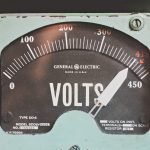Nokia has introduced its “carrier-grade” portfolio of Wi-Fi 7 devices that are designed to enhance end-users’ broadband experience.
The new portfolio encompasses a wide array of devices, catering to both low- and high-end users. It includes dual-band, tri-band, and quad-band configurations, addressing diverse regulatory constraints and market demands.
Nokia’s Wi-Fi 7 offerings stand out due to their unique capabilities, with the Beacon 24 leading the pack. This device boasts an innovative antenna design and orientation—ensuring the best horizontal and vertical coverage for Wi-Fi devices across different floors, guaranteeing seamless connectivity throughout homes and businesses.
What sets Nokia’s Wi-Fi 7 devices apart is their support for multi-link operations (MLO) across four radio links.
MLO enables devices to simultaneously send and receive data across different frequency bands and channels. This technology will deliver greater Wi-Fi connection speeds and cater to the increasing demand for high-speed, uninterrupted internet access.
Justin Doucette, Head of Wi-Fi for Fixed Networks Broadband Devices at Nokia, said:
“The world is moving to multi-gigabit with 25G fiber and 5G mmWave pushing the broadband speeds to the home to new heights.
Wi-Fi 7 provides new capabilities that ensure these multi-gigabit broadband services can be achieved throughout the home.
Powering these devices is Nokia’s Corteca software, which works seamlessly from device applications, through homes, and into the cloud. This end-to-end approach maximises Wi-Fi performance, providing advanced Wi-Fi and device management based on open industry standards (TR-369, EasyMesh).
Corteca also offers a marketplace with applications – including third-party options – running on fiber (ONT) gateways, FWA gateways, and mesh Wi-Fi beacons.
“The combination of our new Wi-Fi 7 devices and our Corteca software gives operators the tools they need to deliver an unsurpassed broadband experience,” added Doucette.
Michael Philpott, Research Director for Digital Consumer Services at Omdia, commented:
“Wi-Fi 7 sets the stage for a faster, more connected future. However, any solution that is deployed should be compliant with the final Wi-Fi Alliance standard which will be critical to interoperability.
The standard will ensure that Wi-Fi devices work seamlessly together, delivering the quality and connectivity we all depend on in the digital world.”
Nokia has confirmed that its new Wi-Fi 7 solutions will be fully certified and compliant with the standard expected to be finalised in early 2024. The complete set of Nokia Wi-Fi solutions will be available in the first half of 2024.
(Photo by Pawel Czerwinski on Unsplash)
See also: FCC opens 6 GHz band for low-power AR/VR devices

Looking to revamp your digital transformation strategy? Learn more about Digital Transformation Week taking place in Amsterdam, California, and London.
Explore other upcoming enterprise technology events and webinars powered by TechForge here.





